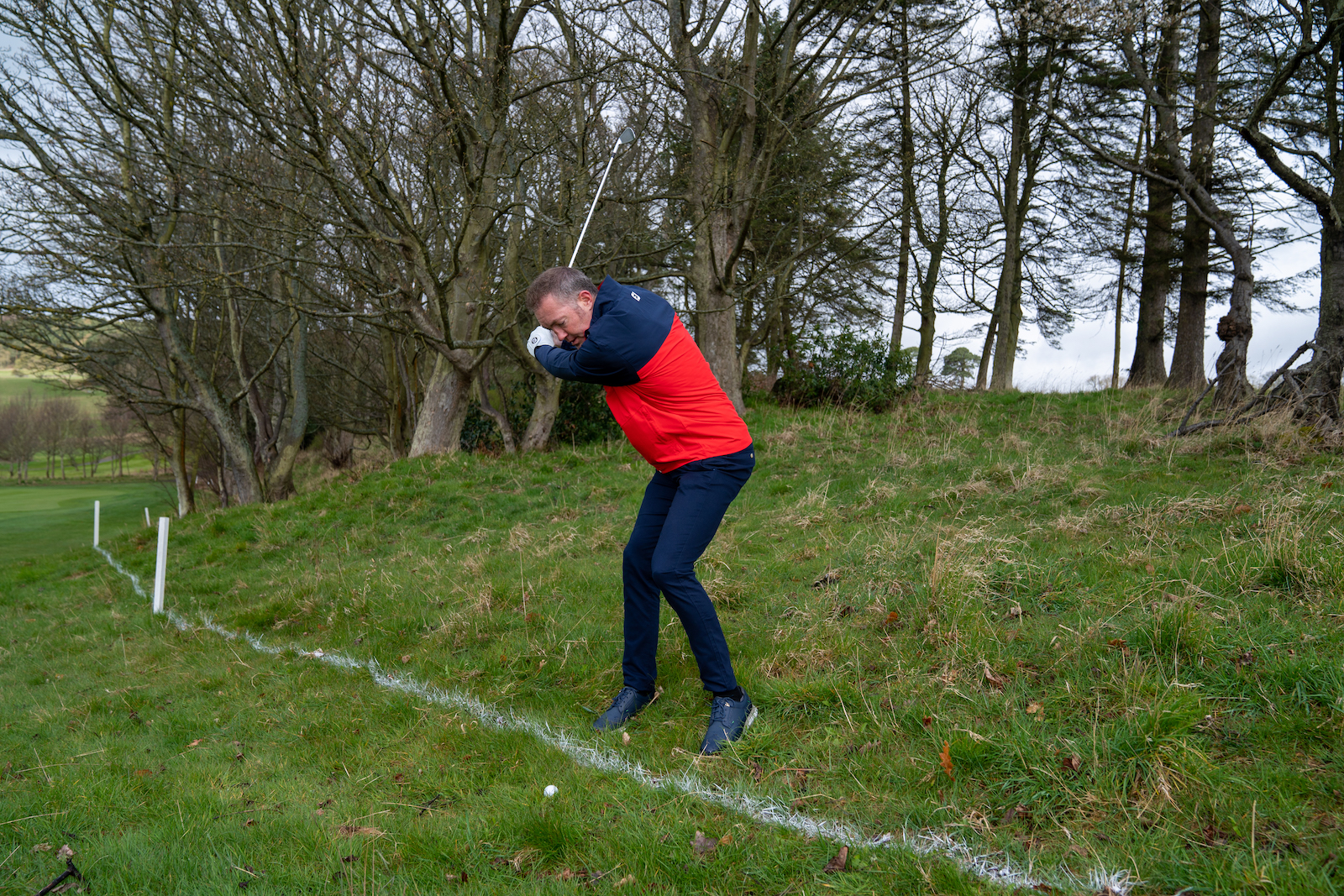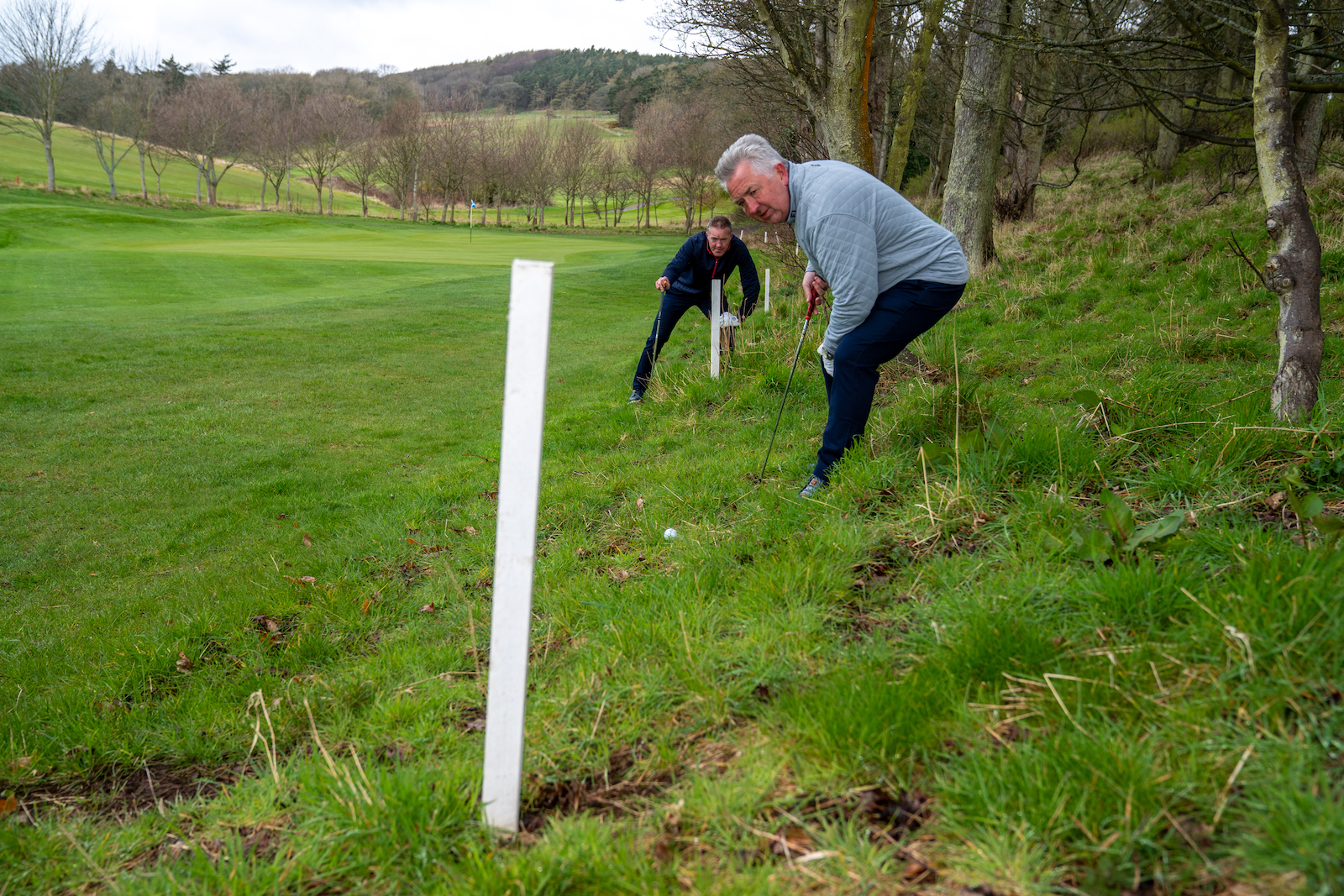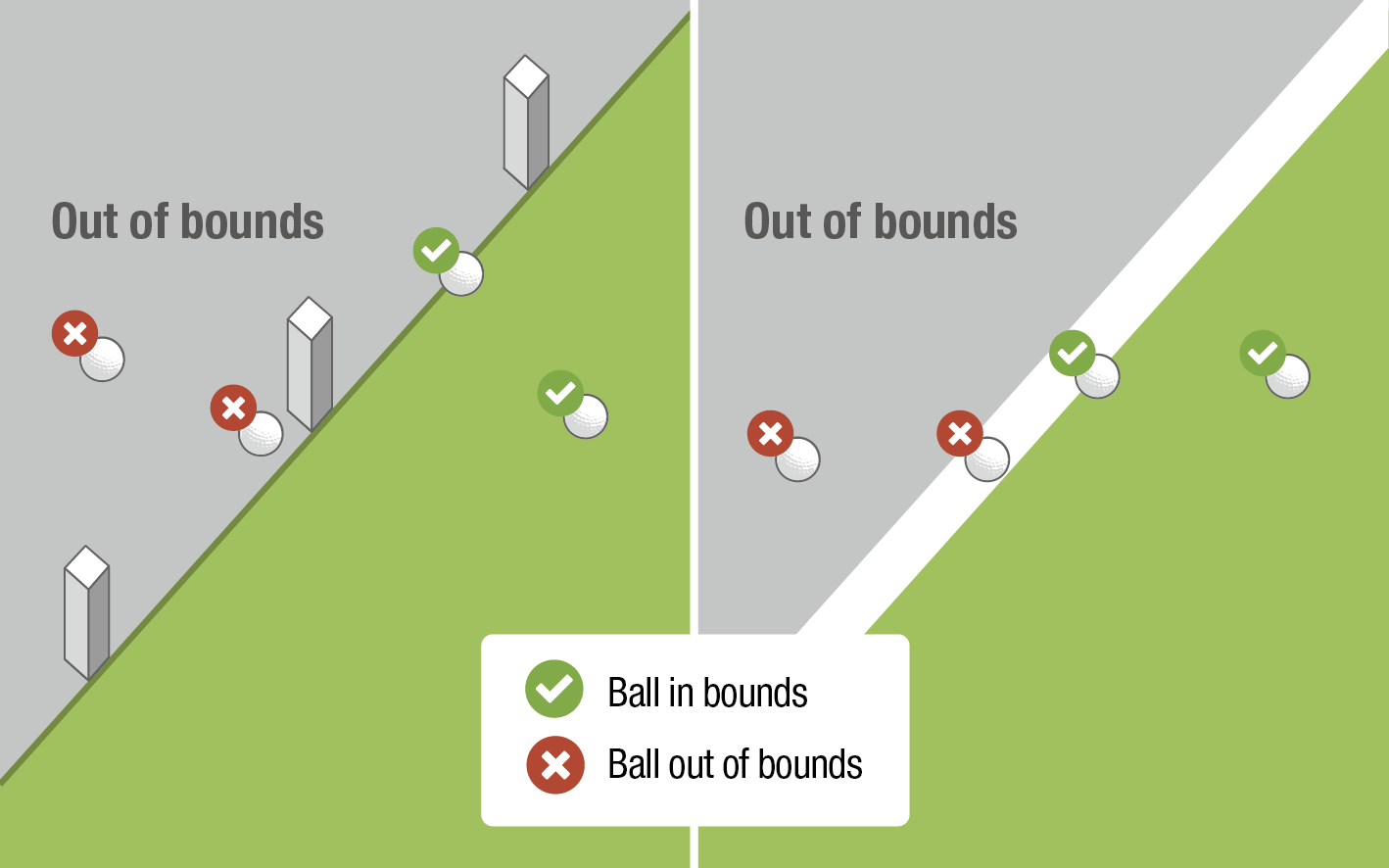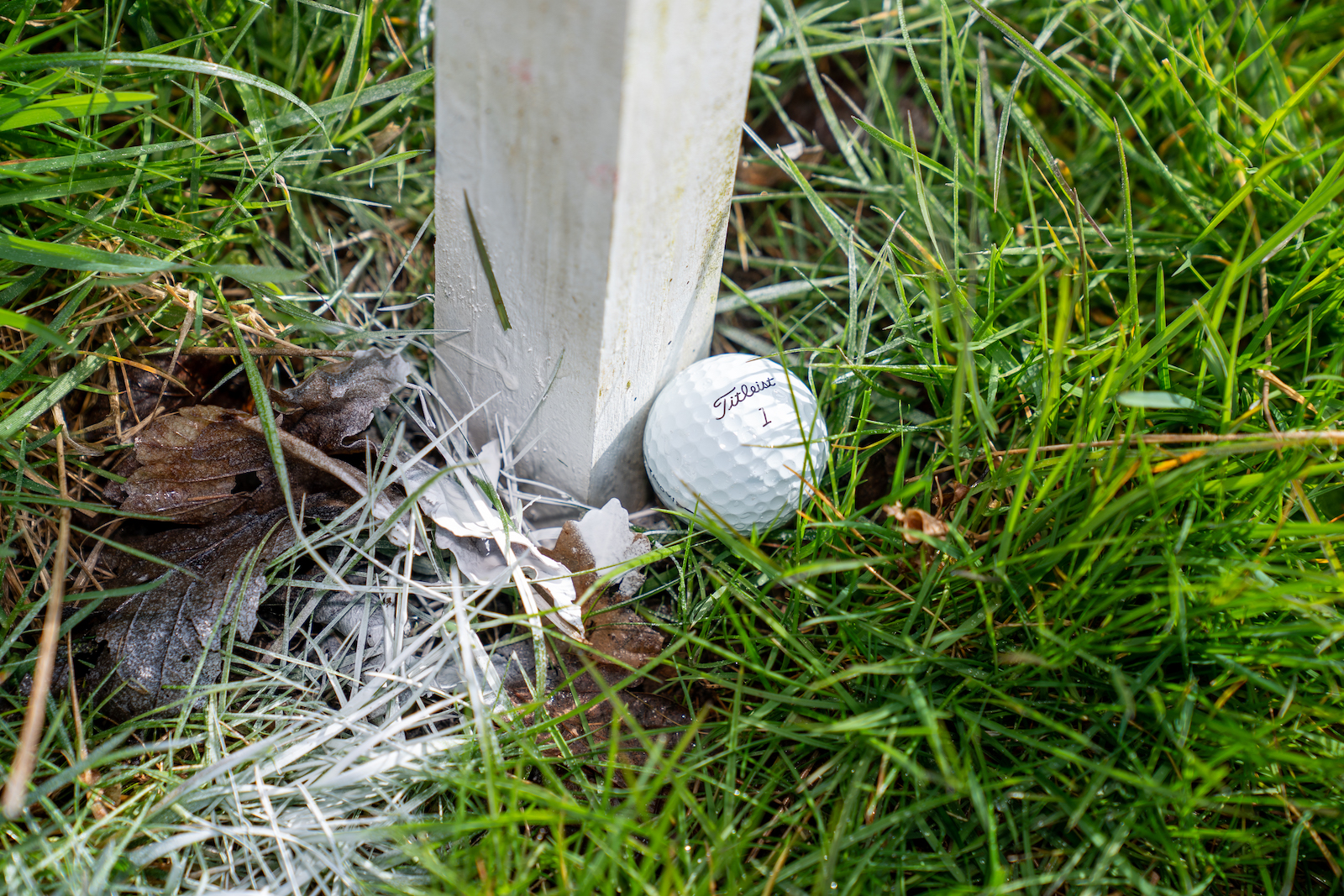
Although the answer to this specific question is very short, it’s worth just spending a little time here on certain related elements that may come in handy, too, such as knowing how to determine whether or not your ball is actually in or out of bounds when it’s a close call
First, though, that short answer to the question being specifically asked here… it’s a ‘yes’. The only thing that is relevant to the out of bounds rule (Rule 18) is your golf ball and where it is lying. You, as the player, are allowed to stand anywhere to play a ball that is within the boundaries of the golf course, even beyond out of bounds if it’s practically possible (e.g., merely a line on the ground rather than a fence or wall).

What do I do if my ball is out of bounds?
As for your ball, if it comes to rest beyond the boundaries of the course, even if only by a millimetre, you are not allowed to play it, whether or not your ball is sitting in an eminently hittable position. Instead, you must proceed under stroke and distance (Rule 18.2b) by adding one penalty stroke and playing the original ball or another ball from where the previous stroke was made.
Hopefully, if there was any doubt as to whether or not your ball would be in bounds, you will have played a provisional ball to save you time and a potentially long walk back if you have fallen just the wrong side.
What if it’s a close call?
The difference between being OOB or not can sometimes be a mere hair’s breadth, so where is the cut-off point? Well, OOB can be defined in a number of ways, most commonly by stakes or lines on the ground (usually white), but sometimes by fences, walls, railings, ditches or similar, so it’s important to know the point at which the course ends.

Where a boundary is defined by white stakes or a fence, the OOB line is the nearest inside points at ground level of the stakes or fence posts. Your ball is in bounds even if only a small part of it overlaps the course side of the boundary line. When OOB is marked by a white line on the ground, the line itself is OOB, but if any part of the ball lies on the course side of the line, it is still in bounds.

Can you move out of bounds stakes?
Finally, and sometimes of relevance to our headline question here, anything used to define OOB is deemed to be fixed under the Rules and you are not allowed to move it to make it easier to play your next shot whether you are standing in or out of bounds - even a white stake that would be easily movable. In that regard, white stakes are very different to most yellow or red penalty area stakes, which are classed as movable obstructions.

So, while you may stand OOB to play a ball in bounds, if a boundary object interferes, there is no free relief and you’ll either have to improvise, play away from your target or take an unplayable ball penalty drop. However, if you remove a boundary object, but then realise your error, you will not be penalised if you put it back to its original position before you play your shot.







